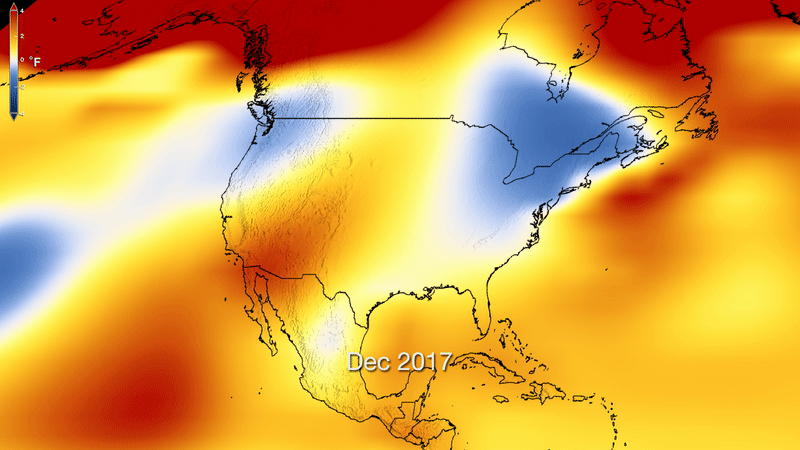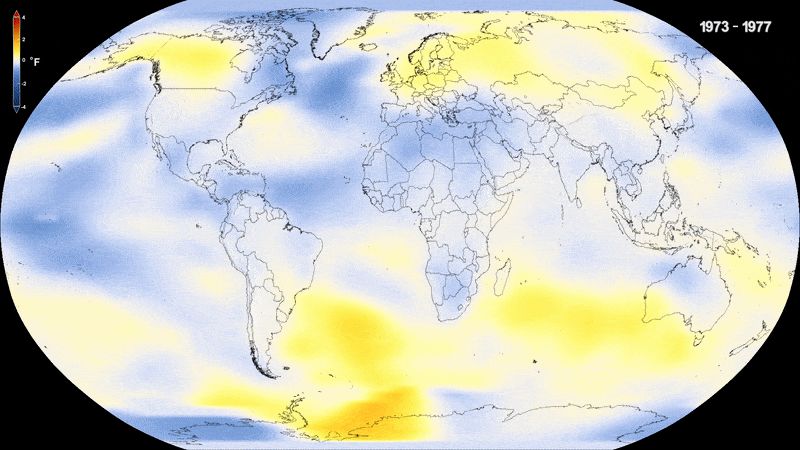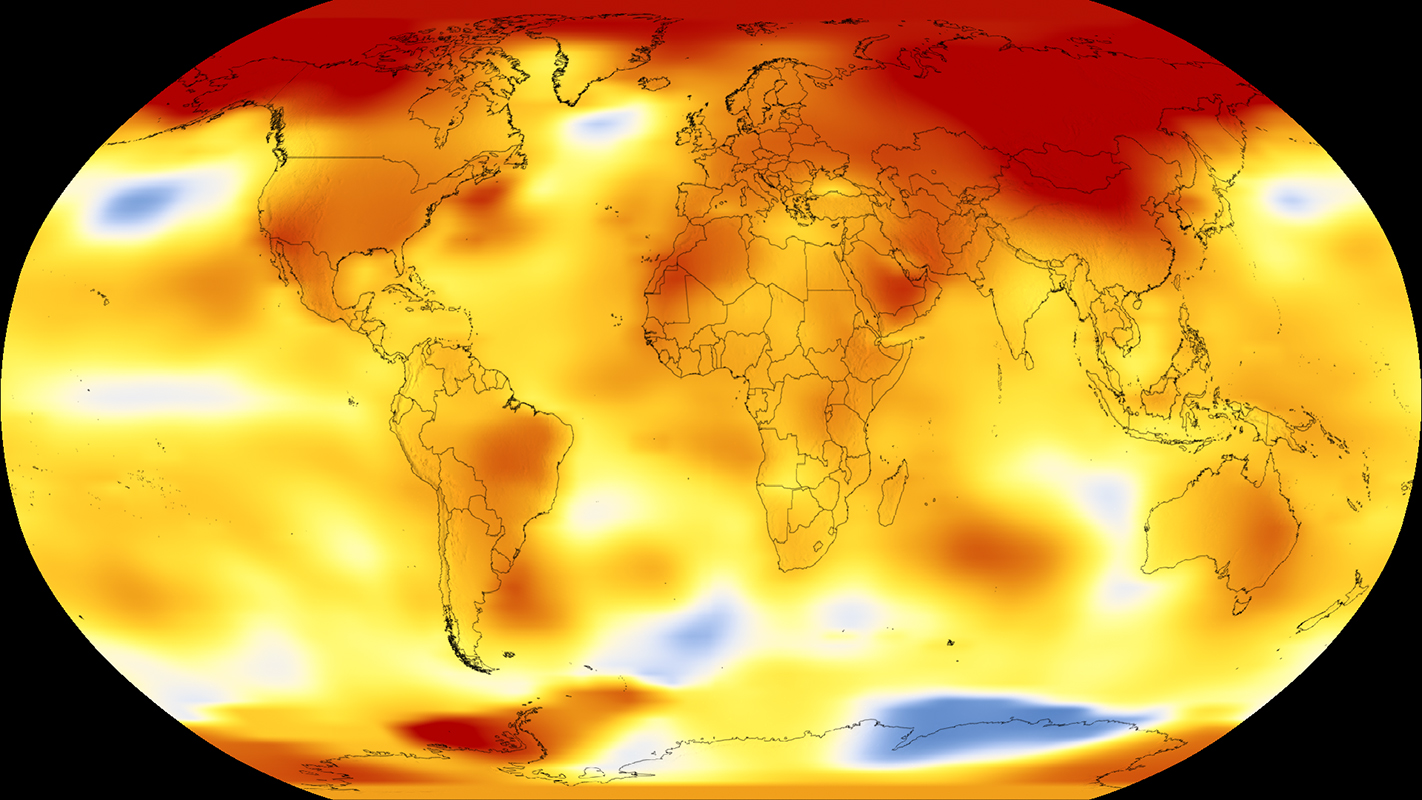Scorcher! 2017 Ranked Among Three Hottest Years Ever

Earth's long-term warming trend continues, and 2017 now ranks as one of the top three hottest years on record, according to a report released today (Jan. 18) by NASA and the National Oceanographic and Atmospheric Administration (NOAA).
Analysis by NASA scientists showed that 2017 was the second warmest year on record, with global average temperatures across land and sea surfaces measuring 1.62 degrees Fahrenheit (0.90 degrees Celsius) above average temperatures from 1951 to 1980.
Meanwhile, NOAA researchers' assessment placed 2017 as the third warmest year, reporting global average temperatures as 1.51 degrees F (0.84 degrees C) above average. [8 Ways Global Warming Is Already Changing the World]
The two agencies use slightly different methods to analyze global temperatures, which accounts for the variation in rankings, NOAA representatives said in a statement. However, the two reports agree that Earth is undergoing a long-term warming trend that shows no sign of abating, and that rising temperatures are driven by human activity, largely through the production of greenhouse gasses.
"Details of the analyses differ in the small details, but the overall picture is very clear and coherent," NASA scientist Gavin Schmidt, director of NASA's Goddard Institute for Space Studies (GISS), explained to reporters at a press event. He further described warming in 2017 as "pervasive across the planet" and "remarkably uniform."
The average amount of heat absorbed and trapped in the upper ocean over the past year was also higher than ever seen before, according to Deke Arndt, chief of the global monitoring branch of NOAA's National Centers for Environmental Information.
In the Arctic, which is warming faster than the rest of the planet, 2017 brought declines in sea ice, with record lows reported from January through March. Antarctica's sea-ice cover was also greatly reduced, measuring about 154,000 square miles (398,858 kilometers) smaller than it was in 1986, the previous record-holding year.
Get the world’s most fascinating discoveries delivered straight to your inbox.
Snow cover in the Northern Hemisphere was also below average by about 160,000 square miles (414,398 kilometers), according to the NOAA report.
Sea ice and snow cover loss create a feedback look that can accelerate global warming; with fewer reflective surfaces on the planet, more sunlight can thereby be absorbed, driving surface temperatures even higher, the scientists explained.
For now, 2016 still stands as the hottest year of all time, a year when no land area on Earth experienced lower-than-average temperatures. During 2016, average temperatures were the highest reported since record keeping began in 1880, reaching 1.69 degrees F (0.94 degrees C) above the average for land and sea surfaces in the 20th century.
Prior to this report, 2015 was ranked as the second hottest year and 2014 as the third hottest. 2017 is also the 41st consecutive year that global surface temperatures exceeded the average for the 20th century, according to NOAA.
In November 2017, the World Meteorological Organization (WMO) announced that the year was likely to rank second hottest, noting that average global temperatures from January to September peaked above preindustrial levels by 1.98 degrees F (1.1 degrees C), Live Science previously reported.
The continued top ranking for 2016 may be due in part to El Niño, a cyclical climate event characterized by warmer-than-average waters in the equatorial Pacific Ocean, which generated some of the global heat that year. But at least 90 percent of 2016's warming was caused by human activity, primarily greenhouse gas emissions, NASA and NOAA reported in January 2017.
The absence of El Niño during 2017 may have cooled things down a little — but not by much, as rising temperature trends globally "are independent of variation in the Pacific," Schmidt told reporters.
"The long-term trend is really what's pushing those numbers up," he said.
El Niño conditions can also curb the formation of powerful storms, and with no El Niño in the picture in 2017 — and with warmer-than-average ocean waters — last year's Atlantic hurricane season was unusually active.
In fact, atmospheric scientists unofficially declared Sept. 8, 2017, to be "the worst hurricane day on record," as three powerful storms — Irma, Jose and Katia — simultaneously threatened Florida, the Caribbean and the Gulf of Mexico, bearing the highest measure of accumulated cyclone energy (ACE) that had ever been recorded in the Atlantic. This period marked the first time that two storms with winds upward of 150 mph (241 km/h) occupied the Atlantic basin at the same time, experts previously told Live Science.
Scientists have linked increases in extreme weather events — such as hurricanes, droughts, floods and wildfires — to climate change. And the new report shows that Earth's long-term warming trend is still underway, with the NASA and NOAA analyses agreeing that the five warmest years on record have occurred since 2010, NOAA representatives said in the statement.
Original article on Live Science.

Mindy Weisberger is a science journalist and author of "Rise of the Zombie Bugs: The Surprising Science of Parasitic Mind-Control" (Hopkins Press). She formerly edited for Scholastic and was a channel editor and senior writer for Live Science. She has reported on general science, covering climate change, paleontology, biology and space. Mindy studied film at Columbia University; prior to LS, she produced, wrote and directed media for the American Museum of Natural History in NYC. Her videos about dinosaurs, astrophysics, biodiversity and evolution appear in museums and science centers worldwide, earning awards such as the CINE Golden Eagle and the Communicator Award of Excellence. Her writing has also appeared in Scientific American, The Washington Post, How It Works Magazine and CNN.




